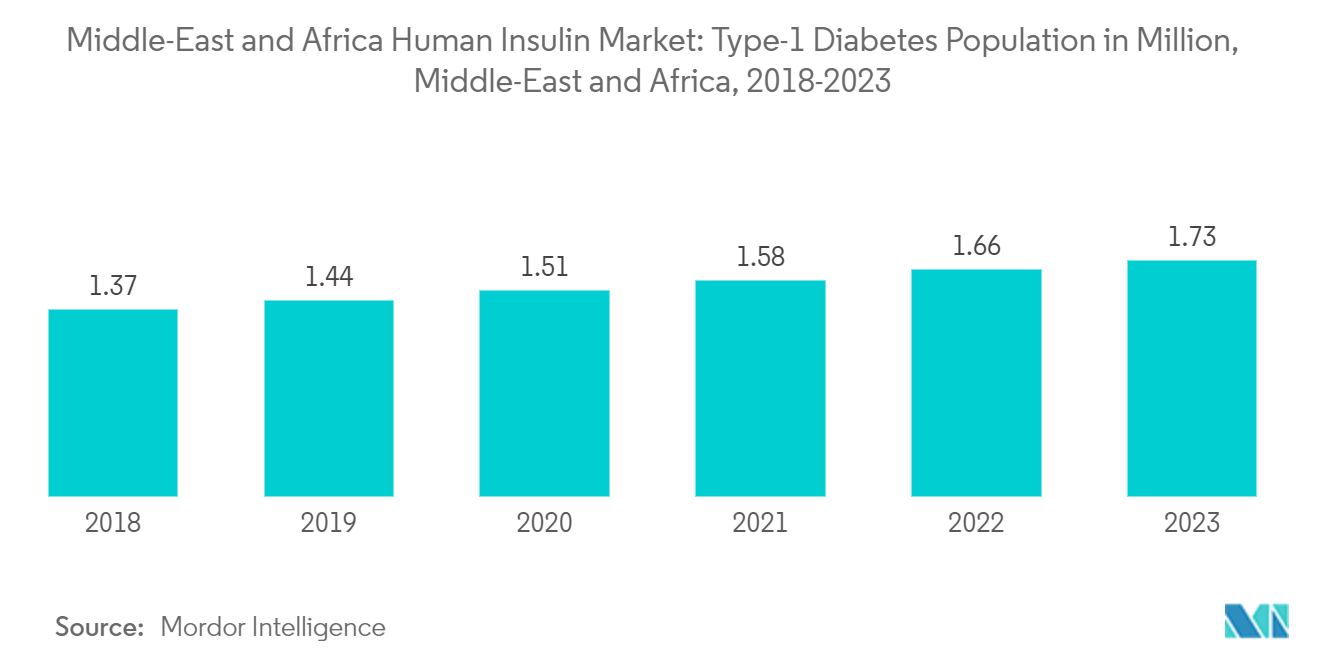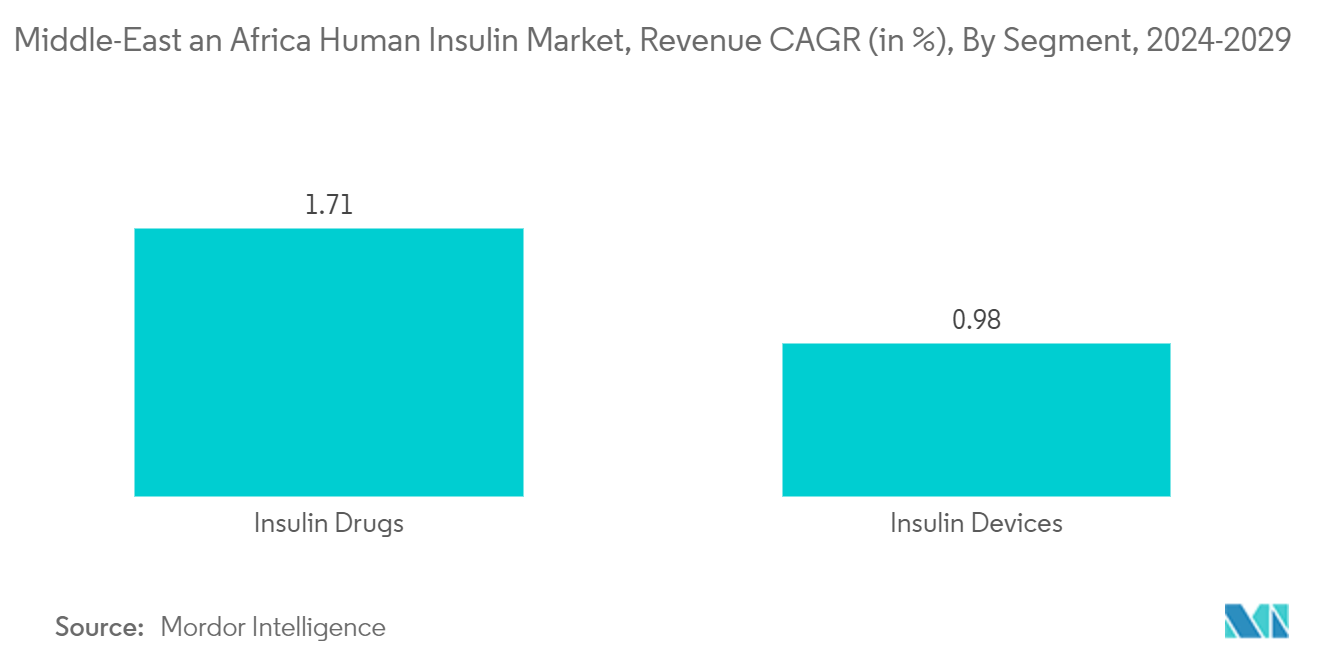Market Trends of Middle East And Africa Human Insulin Industry
Biosimilar Insulin Segment Holds Highest Market Share in Middle-East and Africa Human Insulin Market.
Biosimilar insulin is highly popular in the Middle East and Africa region because of its low cost as compared to branded insulins. The Middle East and African countries have substantial economic diversity. The per-capita expenditure on diabetes in the region is low, although some countries in the region have managed to modify their healthcare expenditure to include biologic and biosimilar therapies.
The governments of the Middle East and African countries are recognizing the importance of driving biosimilar uptake to create a competitive and sustainable biosimilar market. With no clinically significant differences in efficacy, safety, purity, or potency, several companies are developing biosimilars that are very similar to the reference insulin glargine.
The total diabetes population in the Middle East and Africa has increased by more than 200% over the past few years. Approximately 8% of the diabetic population in the region has type-1 diabetes. The Middle East and Africa were two of the largest markets for these biosimilars in 2022. There is increasing adoption of insulin glargine biosimilars across the Middle East and Africa, which is contributing to the overall growth of the segment.
Several governments are recognizing the importance of driving biosimilar uptake to create a competitive and sustainable biosimilar market. Driven by government initiatives, several companies are developing biosimilars that are highly similar to the reference insulin glargine with no clinically meaningful differences in efficacy, safety, purity, or potency. Developments are expected to help the growth of the insulin biosimilar market during the forecast period.

Saudi Arabia Holds Highest Market Share in Middle-East and Africa Insulin Market.
Diabetes is one of the mounting health problems the country is facing. Saudi is ranked among the top three in the Middle East and African countries with the highest prevalence of diabetes. In Saudi Arabia, diabetes mellitus is a condition that is on the rise. In this context, a cross-sectional retrospective study was done to assess Saudi Arabia's non-insulin-dependent diabetic mellitus disease management costs and medicine usage patterns.
According to the WHO, the number of people with diabetes in Saudi Arabia is expected to rise by almost 300% from 890,000 in 2000 to 2,523,000 in 2030. Its prevalence was strongly correlated with energy use, sedentary behavior, and Gross Domestic Product (GDP).
Saudi Arabia, which has the second-highest rate of DM in the Middle East, and seven million and three million people with diabetes and pre-diabetes, respectively, is vulnerable to the worldwide diabetes epidemic. Few studies, however, have looked at the levels of treatment compliance and adherence among diabetic patients living in different parts of Saudi Arabia. According to a study by Ahmed et al., 54.8% of diabetic patients disregarded follow-up schedules, medication instructions, and recommendations for healthy foods, and 45.5% of patients with diabetes skipped follow-up sessions.
Saudi Arabia is aiming to reduce the prevalence of the disease by 10% over the next decade. Several initiatives, including taxing sugary drinks, fitness initiatives, and focusing on preventative care, are being taken up by the government to stem the rising epidemic. The government's focus on combating diabetes and the higher purchasing power of the people in the country may help the market for diabetes drugs, like insulin drugs, during the forecast period.


